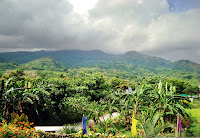Dr Abe V Rotor
Paaralang Bayan sa Himpapawid (People's School on Air) with Ms Melly C Tenorio
738 DZRB 8 to 9 evening class, Monday to Friday
Sungka (pronounced SOONG-kah) is a game played on a solid
wooden block with two rows of seven circular holes and two large holes at both
ends called "head".
Sungka, a favorite family game in the
Philippines and Asian countries
If you can't hold but vent your ire,
and wish your opponent harm
by fire, quagmire, and death,
and surprise him to disarm,
If you are seeking a battle
in silence, save the clicking
of cowries in the lazy air,
whatever means of winning
By the sleight of the hand,
or distract your enemy,
surreptitiously skipping
traps by hiding a cowrie.
If you play the ruthless Nero
while Rome is burning;
and your opponent raids
the bounty you're keeping,
In words unpleasant, unkind,
yet devoid of real meaning
in incessant exchange.
either winning or losing.
Winner and loser come to terms
in sweet notes that friends remain,
and peace reigns once again -
play of the sungka game.
 Sungka, another indigenous invention, Calatagan, Batangas
Sungka, another indigenous invention, Calatagan, Batangas
Rules in playing sungka
1. The game begins with 49 game
pieces (shells, marbles, pebbles or seeds) equally distributed to alternate holes
- seven pieces in every other hole - except "heads" which remain
empty. Sungka requires two players. Each player controls the seven holes on his
side of the board and owns the "head" to his right. The goal is to
accumulate as many pieces in your own "head".
2. The first player removes all pieces from the hole on the extreme left of on his side. He then distributes them anti-clockwise --- one in each hole to the right of that hole --- omitting an opponent's "head" but not a player's own "head".
3. If the last piece falls into an occupied hole then all the pieces are removed from that hole, and are distributed in the same way (to the right of that hole) in another round. This player's (current) turn ends when the last piece falls into an empty hole on the opponent's side.
4. If the last piece distributed
falls into a player's own "head," then the player earns another turn, which can begin
at any of the seven holes on his side.
5. If the last piece distributed
falls into an empty hole on his side, then the player captures all the pieces
in the hole directly across from this one, on the opponent's side and put them
(plus the last piece distributed) in his own "head". If the opposing
hole is empty, no pieces are captured..
6. The other player chooses which
hole he wishes to start from, removes the pieces and distributes them - one in
each hole to the right of that chosen hole. If a player has no pieces on his
side of the board when it is his turn, then he must pass.
7. The game ends when no pieces are left in any hole on both sides of the board. The players now count the number of pieces in their own "head" and see who has won.
7. The game ends when no pieces are left in any hole on both sides of the board. The players now count the number of pieces in their own "head" and see who has won.
This game (with variations) is also
played in other Southeast Asian countries such as Indonesia and Malaysia where
it is known as "Congkak."
(Acknowledgment: Internet - ASEAN/Philippines Sungka, on rules of game)
(Acknowledgment: Internet - ASEAN/Philippines Sungka, on rules of game)



















































